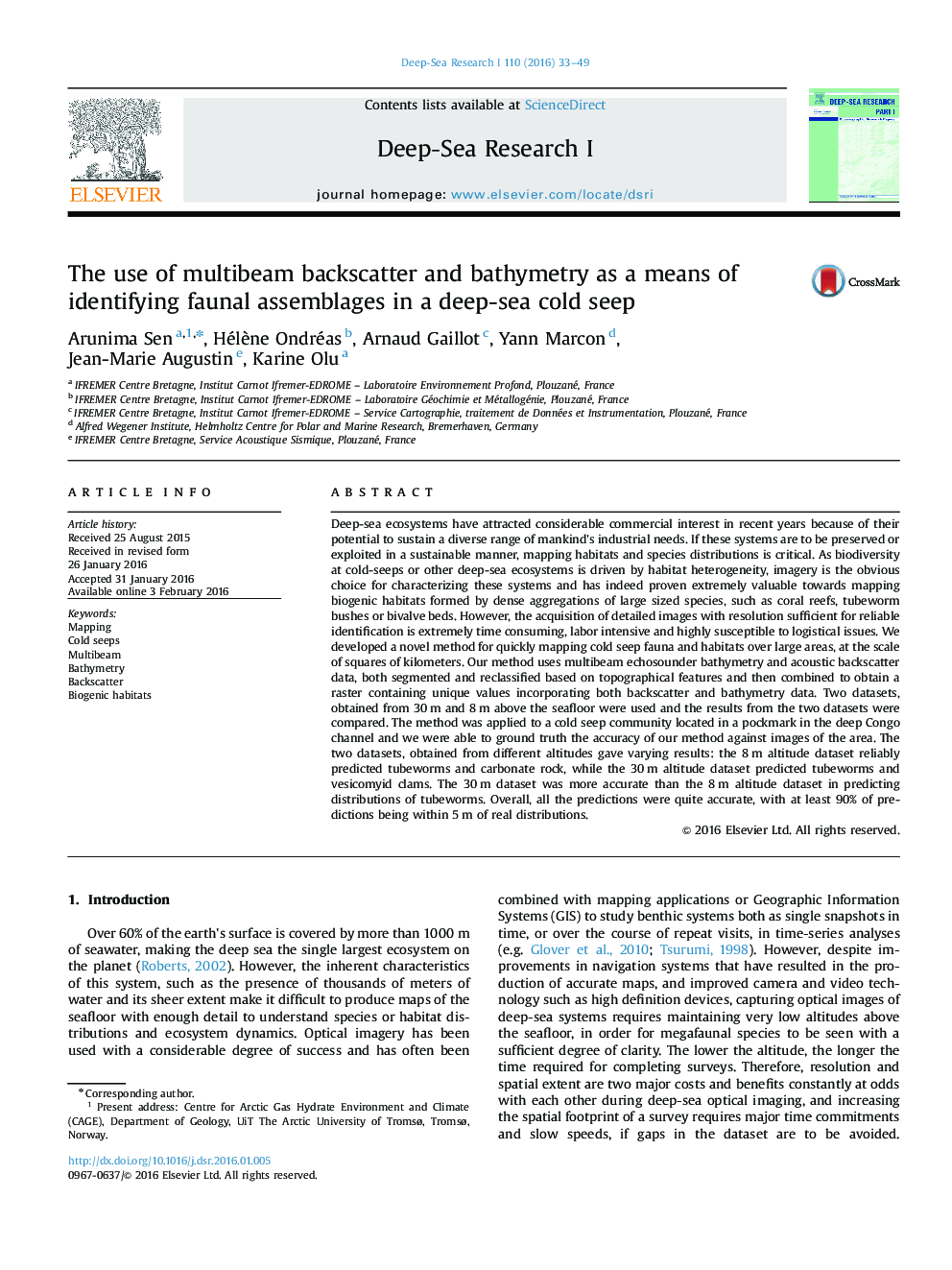| کد مقاله | کد نشریه | سال انتشار | مقاله انگلیسی | نسخه تمام متن |
|---|---|---|---|---|
| 4534453 | 1626320 | 2016 | 17 صفحه PDF | دانلود رایگان |

• We developed a method for mapping a deep-sea cold seep over large spatial scales.
• The method uses quickly obtainable multibeam bathymetry and backscatter data.
• Two datasets were used, from altitudes of 30 m and 8 m, and the results compared.
• Tubeworms and carbonate were predicted from 8 m and tubeworms and clams from 30 m.
• All predictions were highly accurate (within 5 m of distributions, 90% confidence).
Deep-sea ecosystems have attracted considerable commercial interest in recent years because of their potential to sustain a diverse range of mankind's industrial needs. If these systems are to be preserved or exploited in a sustainable manner, mapping habitats and species distributions is critical. As biodiversity at cold-seeps or other deep-sea ecosystems is driven by habitat heterogeneity, imagery is the obvious choice for characterizing these systems and has indeed proven extremely valuable towards mapping biogenic habitats formed by dense aggregations of large sized species, such as coral reefs, tubeworm bushes or bivalve beds. However, the acquisition of detailed images with resolution sufficient for reliable identification is extremely time consuming, labor intensive and highly susceptible to logistical issues. We developed a novel method for quickly mapping cold seep fauna and habitats over large areas, at the scale of squares of kilometers. Our method uses multibeam echosounder bathymetry and acoustic backscatter data, both segmented and reclassified based on topographical features and then combined to obtain a raster containing unique values incorporating both backscatter and bathymetry data. Two datasets, obtained from 30 m and 8 m above the seafloor were used and the results from the two datasets were compared. The method was applied to a cold seep community located in a pockmark in the deep Congo channel and we were able to ground truth the accuracy of our method against images of the area. The two datasets, obtained from different altitudes gave varying results: the 8 m altitude dataset reliably predicted tubeworms and carbonate rock, while the 30 m altitude dataset predicted tubeworms and vesicomyid clams. The 30 m dataset was more accurate than the 8 m altitude dataset in predicting distributions of tubeworms. Overall, all the predictions were quite accurate, with at least 90% of predictions being within 5 m of real distributions.
Journal: Deep Sea Research Part I: Oceanographic Research Papers - Volume 110, April 2016, Pages 33–49